
5 Hawaiian Islands, 5 Must-See Natural Wonders
From an active volcano to colorful cliffs, these Earth-made marvels will leave you breathless.
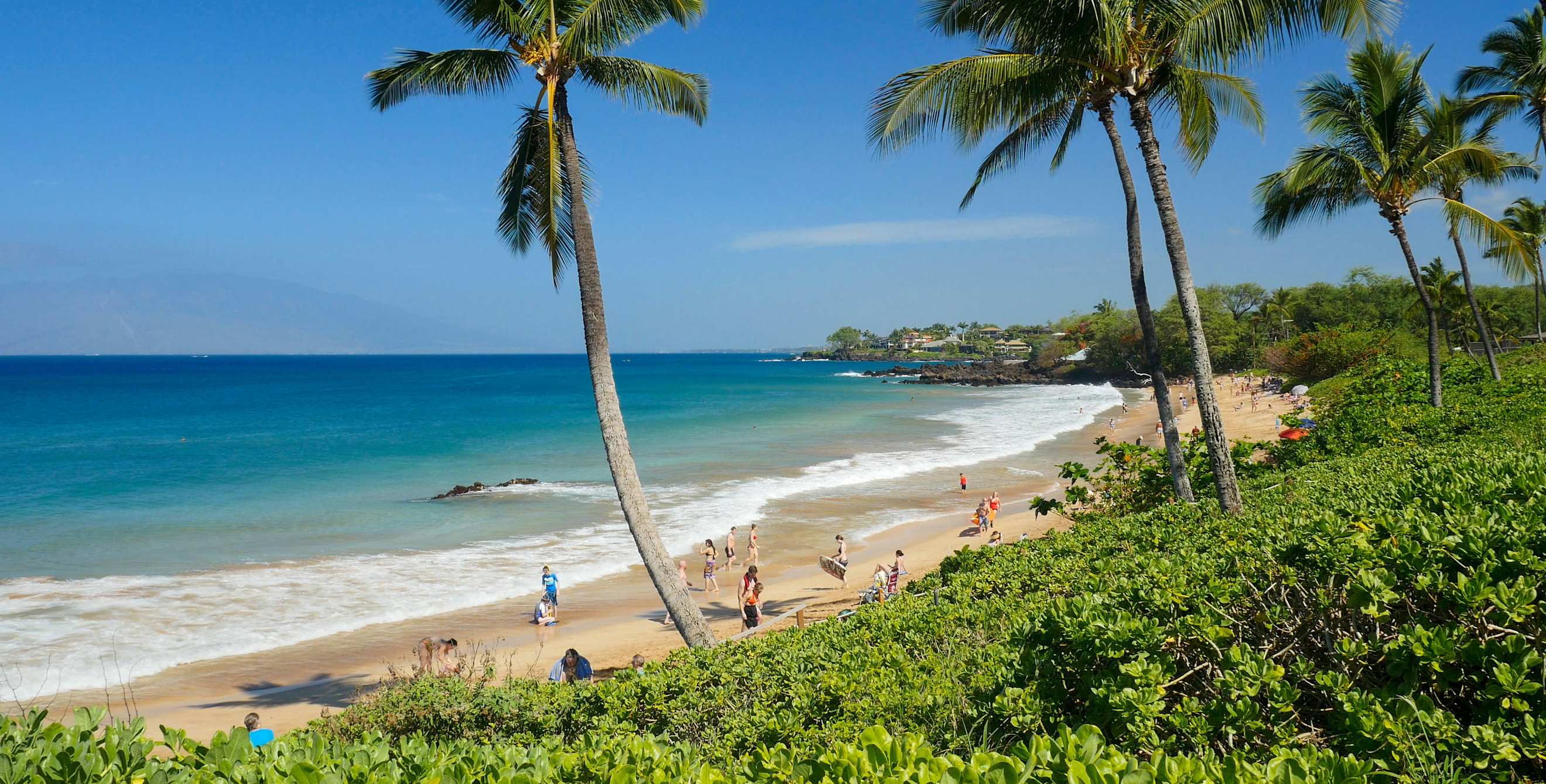
The state of Hawaii draws millions of travelers to its shores every year, seeking a chance to slow down and look at the world a little differently. Whether it’s trying lychee for the first time or taking a hula class, there’s always something new to discover on the islands—but the natural beauty is what keeps visitors coming back again and again.
The island chain was created (and is still being created) by volcanoes, which opens up a world of wonders to explore, with each island offering dramatically different experiences. It’s worth a trip to Hawaii (Big Island), Kauai, Maui, Oahu, and Lanai to check these wonders off your proverbial bucket list. Getting there can be tricky for some spots; planning in advance is key. Plus, discover where to stay and activities around each destination.
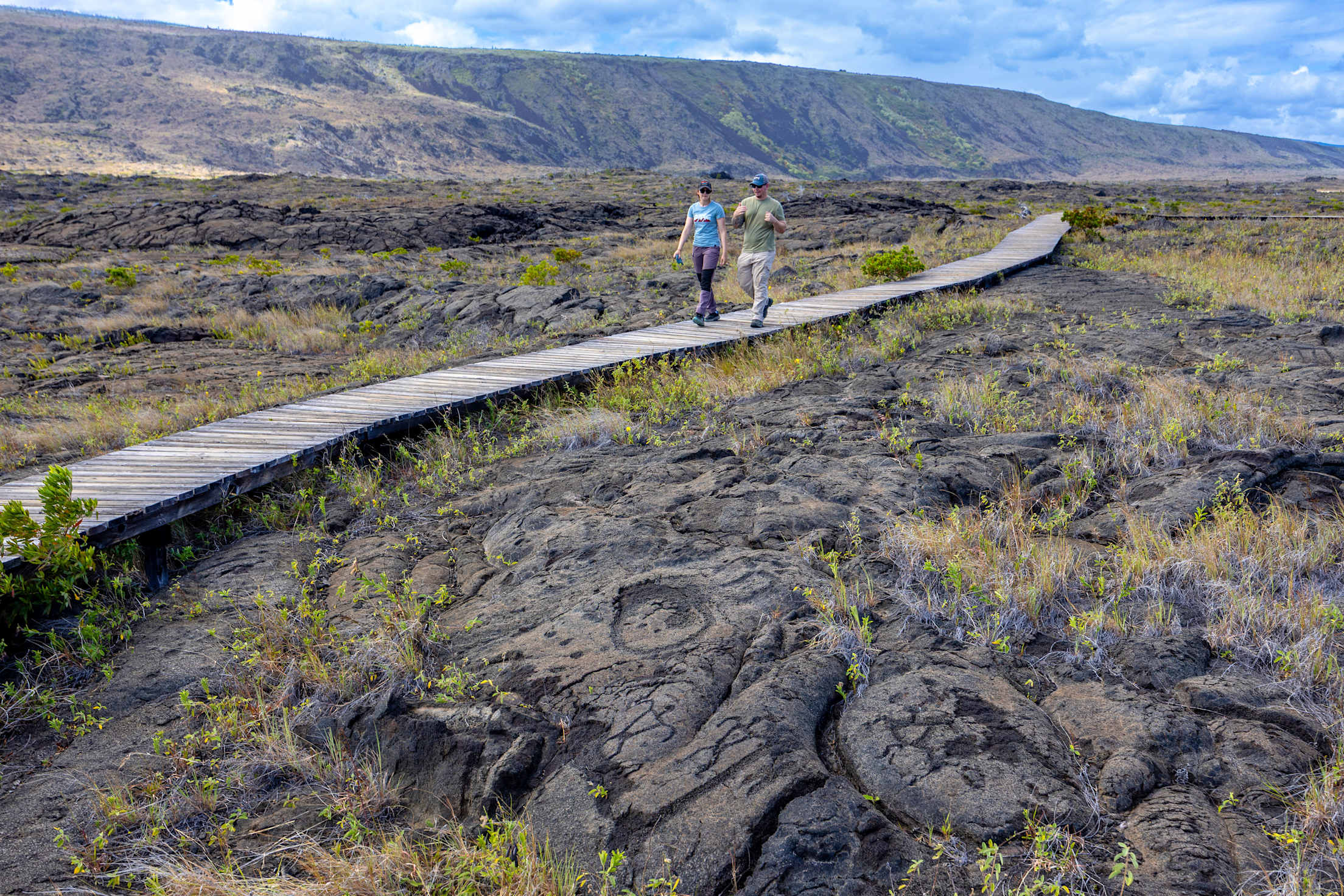
Island of Hawaii (Big Island): Kilauea Volcano
The most mind-blowing views on the Big Island can be found around Kilauea, one of the world’s most active volcanoes. Kilauea has been particularly active in 2025, giving visitors a rare chance to see its neon orange lava show. Of course, there are no guarantees when it comes to nature; eruptions are unpredictable, making it difficult to plan a vacation around.
For those who miss an active eruption, Hawaii Volcanoes National Park is still worth a visit for its wonderful hikes, cave exploration, bird-watching, and scenic drives that allow you to explore this ever-changing landscape.
How to Get There
There are a few options for visiting Kilauea, depending on your budget and time. The most popular (and most expensive) is to board a helicopter in Hilo or Waikoloa for a quick cruise over the park. Guided tours via vans and buses are also popular and typically include lunch. Most visitors, however, explore the park by rental car, then on foot; detailed maps are available on-site. For tips about recent volcanic activity, chat with park rangers at the Kilauea Visitor Center. (Note: The visitor center is undergoing renovation through summer 2026; find rangers and volunteers at the temporary Welcome Center.)
Visiting the park during an eruption is amazing, but it can also be logistically challenging. Highway 11 leading up to the entrance can become a parking lot where people spend hours waiting in line. Your best bet is to visit before sunrise when the crowds are smaller. You also get the added bonus of watching the sun rise over the park.
While it may be tempting to try to rush over from another island during an eruption, there is no way to predict when one will happen or its duration. Episodes can be as short as a few hours, and there may be pauses in activity that last several days. Keep an eye on the U.S. Geological Survey website for updated information and the closest thing you’ll find to eruption predictions.
Where to Stay
To stay in or near the park, there are a few options. Inside the park is the historic Volcano House, which has hosted a variety of dignitaries over the years and includes some rooms with views of the crater. Volcano Village Estates provides a charming stay in the mountain rainforests surrounding the park. The biggest nearby city, Hilo, is approximately 45 minutes from the park and has many options, including SCP Hotel, Hilo Hawaiian Hotel, and Grand Naniloa Hotel Hilo.
Things to do Nearby
There’s plenty to do around the park, so much that you may want to spend more than one day there. In Mountain View (between Hilo and the park), Mt. View Bakery has incredible mochi donuts in flavors such as lilikoi, lychee, and taro. Next door at Koana, you can learn more about Hawaii’s homegrown coffee beans.
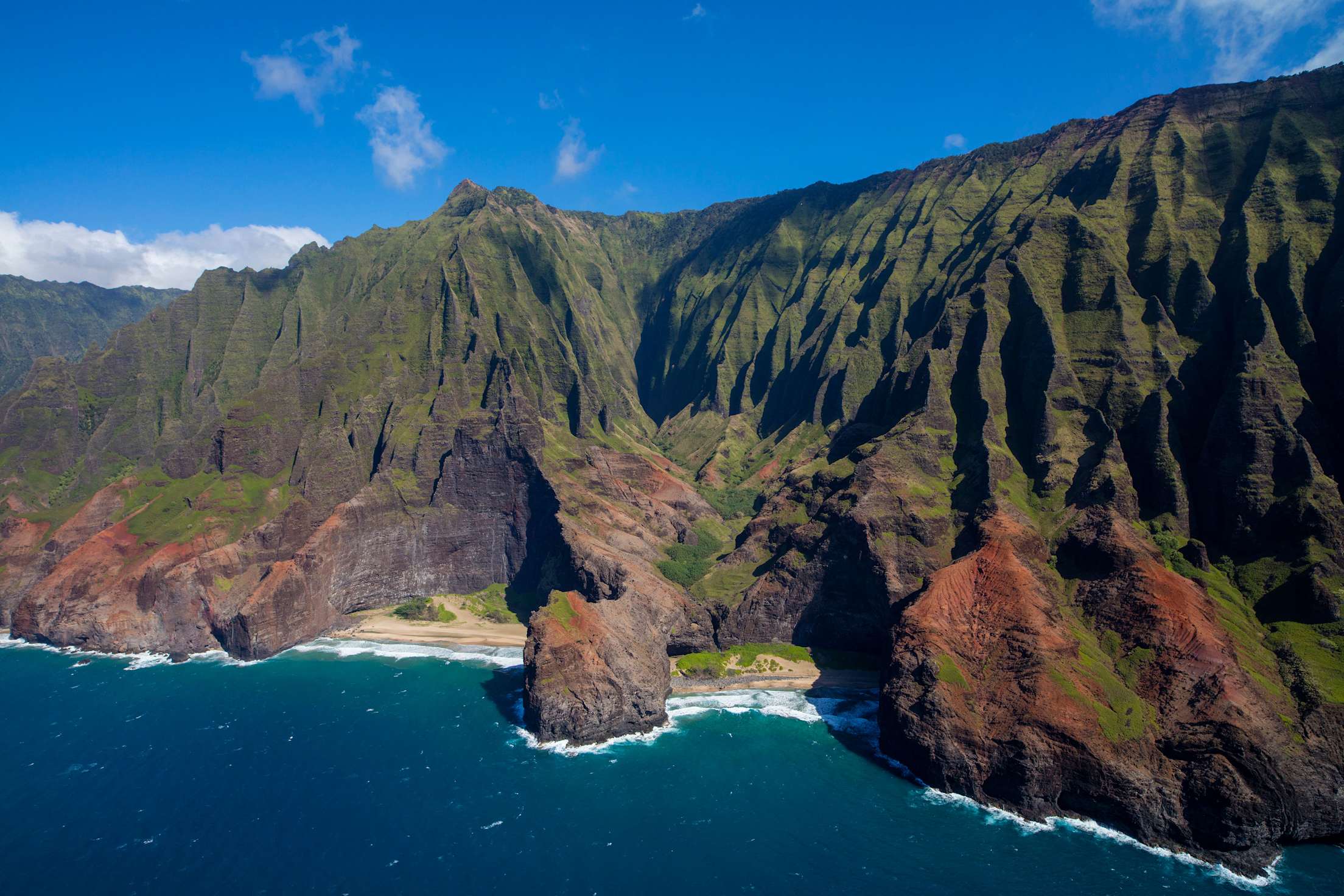
Kauai: Napali Coast
The Napali Coast dominates Kauai’s landscape like a massive castle, its 17 miles of sea cliffs sparkling under the Hawaii sun in vibrant greens, reds, and golds. The majestic cliffs (pali) that make up the island’s northern coast can stretch as high as 4,000 feet and contain deep valleys, vibrant waterfalls, and isolated beaches. The remote wilderness is typically viewed from afar, so that the magnitude of this spectacle can be fully appreciated. However, accessing it on foot is also an option for the more adventurous traveler.
How to Get There
Due to its extremely wild nature and limited access, the best way to take in the sights of the Napali Coast is by sea or air, and you'll want to book a tour in advance. By air, Alii Kauai and Jack Harter Helicopters make great choices out of Lihue, while Blue Hawaiian offers convenient options for those staying in the Princeville area. On the sea, charter boats at outfitters such as Capt. Andy’s and Blue Dolphin offer snorkeling, cave exploration, sunset sails, cultural site exploration, and more. To access the coast by land, youʻll need a reservation for camping at Kalalau (even if you’re just doing a day hike), where you’ll hike the Kalalau Trail along the coast. Camping is very rugged and requires a reservation at Haena State Park in addition to camping permits.
Where to Stay
If you book an air tour, Lihue is a convenient place to stay; the Royal Sonesta Kauai, Timbers Kauai Ocean Club & Residences, and Sheraton Kauai Coconut Beach are great choices. In Princeville, 1 Hotel Hanalei offers luxury, and Hanalei Bay Resort is ideal for families. For boat tours, you’ll typically leave from the southern part of the island, making Waimea or Poipu the best base of operations.
Things to do Nearby
If you’re visiting via helicopter or boat, a drive to the west side of the island for more rugged beauty is highly suggested. Waimea Canyon, the “Grand Canyon of the Pacific,” is stunning, and nearby Kokee State Park makes for a nice day excursion. Be sure to stop at the Kokee Natural History Museum and Kokee Lodge for lunch.
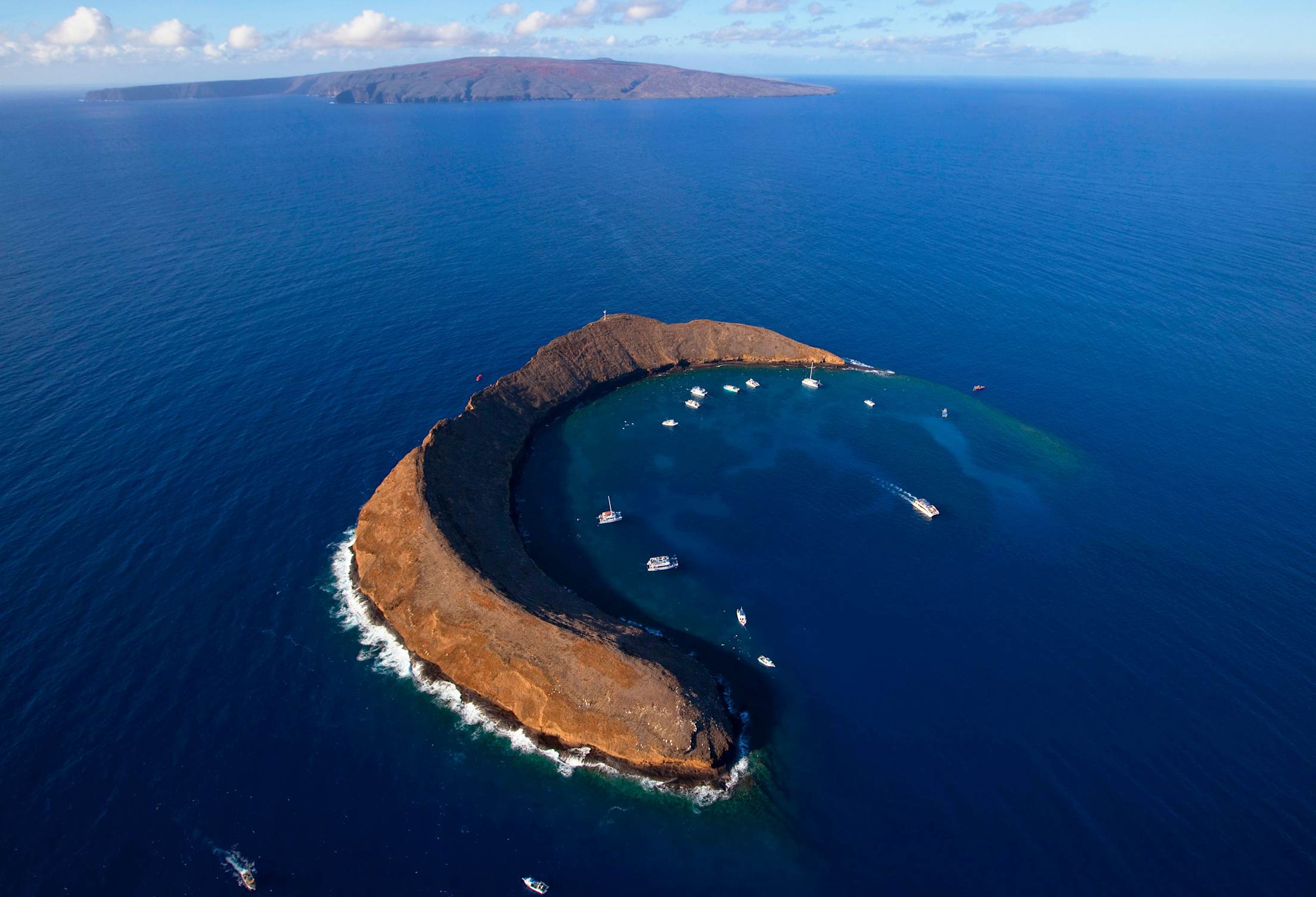
Maui: Molokini Crater
For some of the best snorkeling in the islands, hop on a boat and head to Molokini Crater, a crescent-shaped islet formed by a partially submerged volcanic crater off the southwest coast of Maui. Swim around the crater’s cone, where you can spot parrotfish, manta rays, and the occasional reef shark. Most boat tours include an additional stop at Maluaka Beach (also known as Turtle Town) for more snorkeling. For those who don’t snorkel, there’s a decent chance you’ll spot dolphins and the occasional humpback whale from December to April.
How to Get There
A variety of operators offer group and private boat tours, most departing out of Maalaea Harbor. Molokini can get very busy throughout the day, and you’ll beat the crowds if you can catch one of the first boats; out of Wailea-Makena, Kai Kanani’s 6:15 a.m. sunrise tour is among the first to arrive.
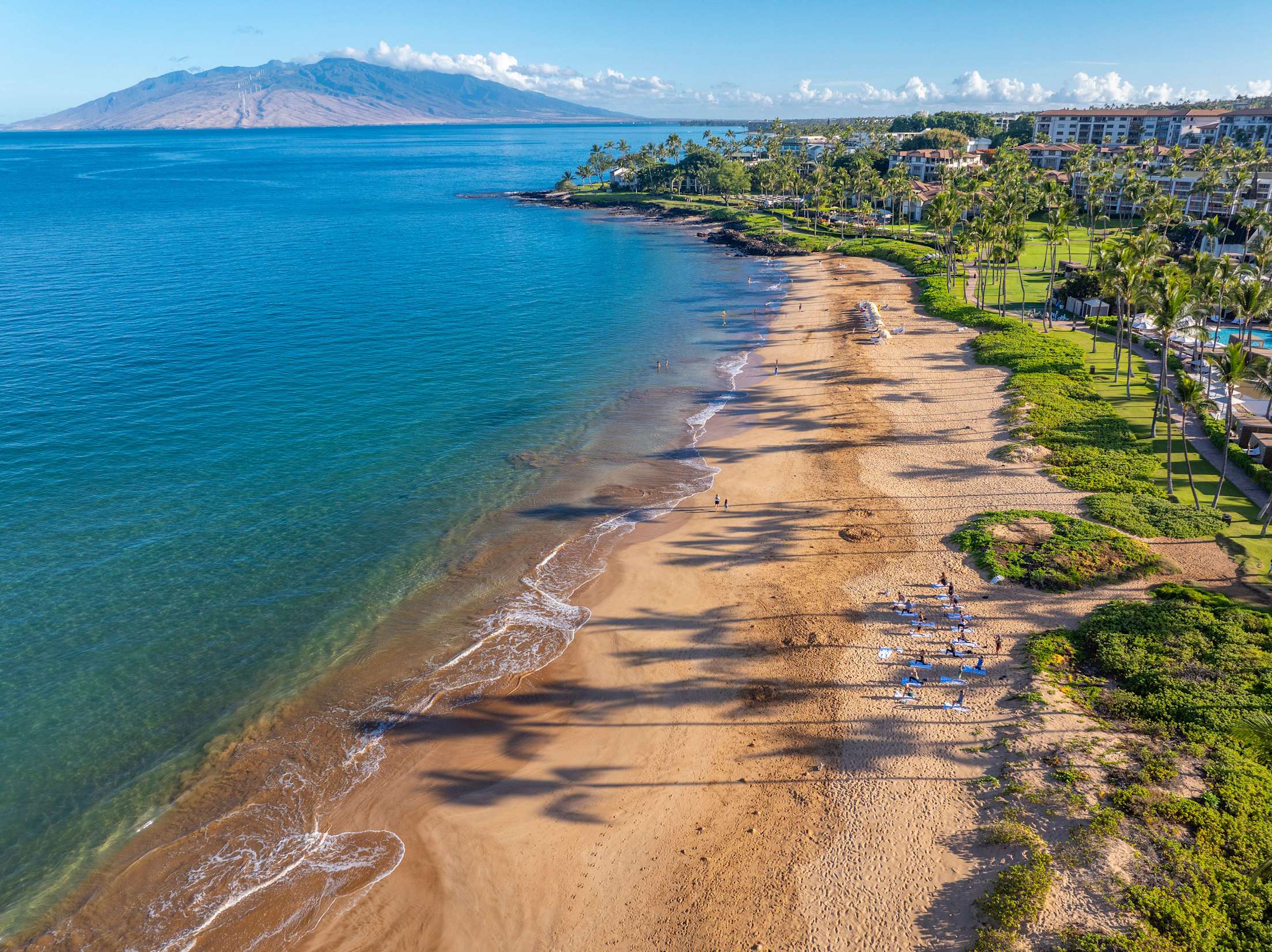
Where to Stay
The Wailea area features luxury accommodations at the Four Seasons and Waldorf Astoria (Grand Wailea). Wailea Beach Resort’s extensive pool options make it great for families, as well as Wailea Beach Villas, which feature full kitchens, in-unit washer and dryer, and pools. Hotel Wailea is the sole adults-only hotel on Maui, and some of its units offer stunning views of Molokini.
Nearby Kihei offers more budget-friendly options, most of which are condo-style properties. Aston Maui Hill and Aston at the Maui Banyan are ideal for families planning an extended stay.
Things to do Nearby
After your snorkel trip, stop by one of the nearby breweries, Kohola Brewery and Maui Brewing Co., for a pint and a burger. If you’re coming out of the water at Maalaea, this harbor town has great dining, including Tante Maalaea and Point Break Pizza & Panini. Seascape at the Maui Ocean Center is a must-do, even if only for a snack—the ulu hummus is worth the stop.
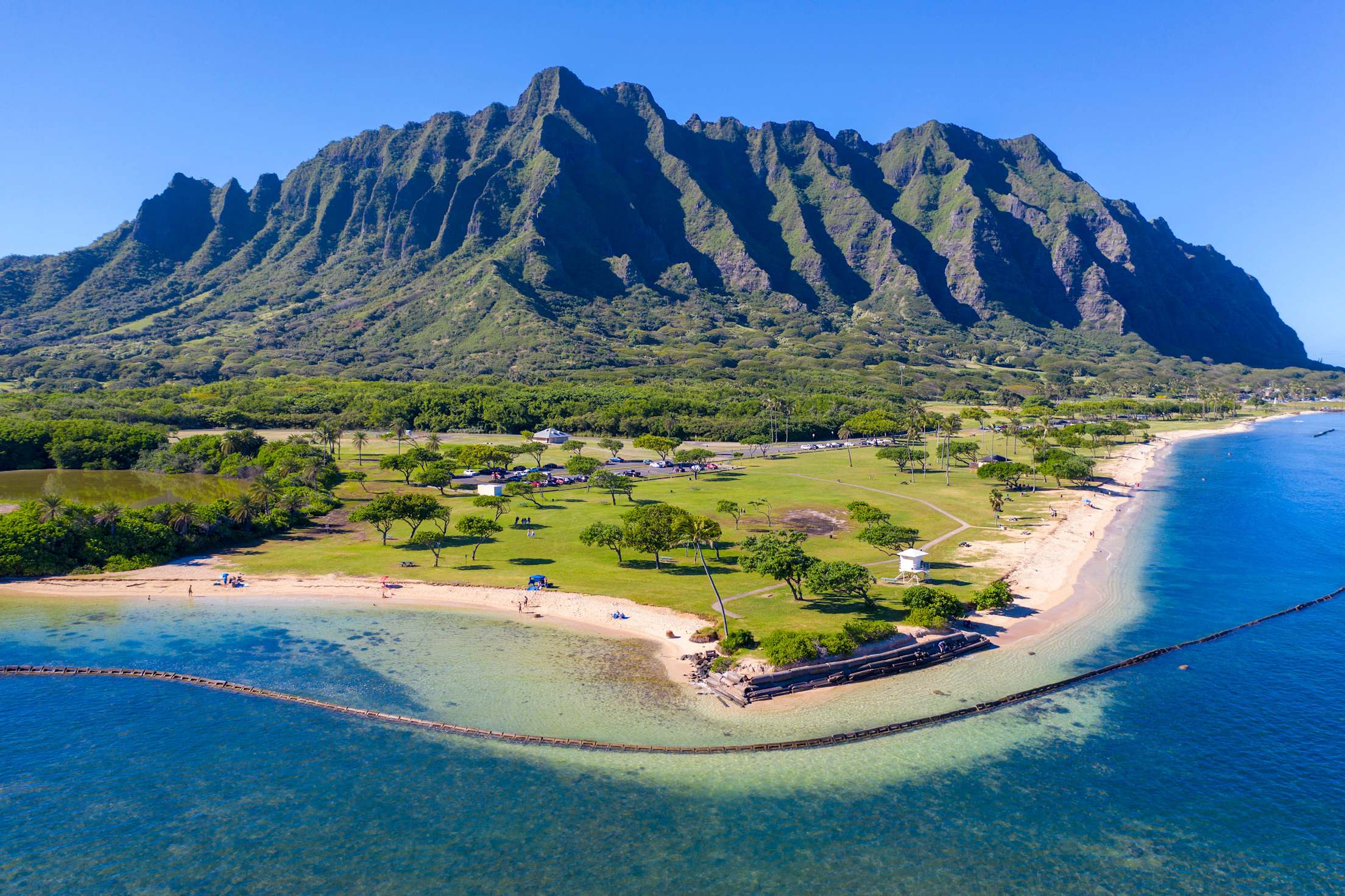
Oahu: Koolau Mountain Range
There’s so much more to Oahu than Waikiki, and the Koolau Range should be at the top of your list. Formed as the result of volcanic eruptions, the range’s 30-plus miles of jagged green peaks have provided epic backdrops to movies such as "Jurassic Park" and "Kong: Skull Island." Because of the wind-facing position of the range, prepare for rain, mud, and changing temperatures. It’s also important to pay attention to warning signs and safety precautions, including staying on the trail when hiking.
Some of the more popular spots for adventures include the Manoa Falls hike, the Aiea Loop Trail hike, and the Maunawili Trail. One of the biggest draws along the windward side of the range is Kualoa Ranch, which sits along Kaneohe Bay. The 4,000-acre ranch encompasses three valleys and offers UTV tours (like an all-terrain vehicle but larger), horseback riding, zip lining, and a “secret” beach.
How to Get There
Exploring the eastern part of Oahu requires a rental car. If you don’t want a car during your whole trip (Honolulu has sufficient public transportation), rent a car near your hotel for a few days of exploring the rest of the island. If you’re planning to visit the area via Kualoa Ranch, it offers round-trip transportation from Waikiki for $30.
Where to Stay
Most hotels on Oahu are in the Waikiki area, and those closer to the eastern end, including Kaimana Beach Hotel and The Twin Fin, make the windward side a little more accessible. To get out of Waikiki altogether, Kahala Hotel & Resort offers a luxurious stay on a secluded beach in the Kahala area, while Paradise Bay Resort makes for a great launching point in the Kaneohe area if you want to explore the Koolau Range for more than one day.
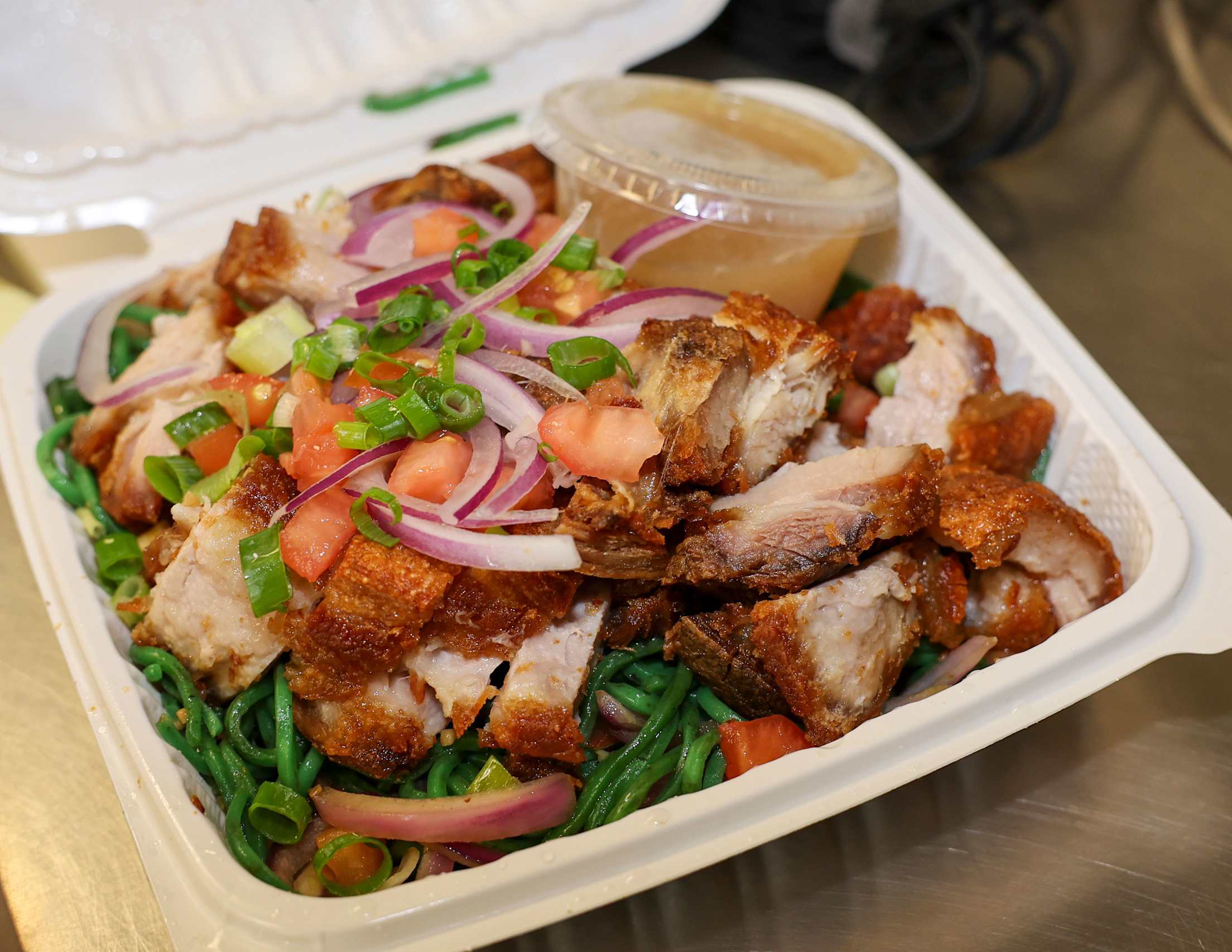
Things to do Nearby
Depending on where you plan to visit along the range, you could end up in very different areas of the island. If you’re heading to the windward side of the mountains, there are some real gems in the Kaneohe area. One of the must-do activities on the east side of Oahu is a visit to the Byodo-In Temple, a stunning and serene non-practicing Buddhist temple at the foot of the Koolau Mountains (open daily from 8:30 a.m. to 4:30 p.m.). For lunch, stop at Adela’s Country Eatery for the vibrant noodle plates and indulgent desserts, which will help you refuel after a long hike.
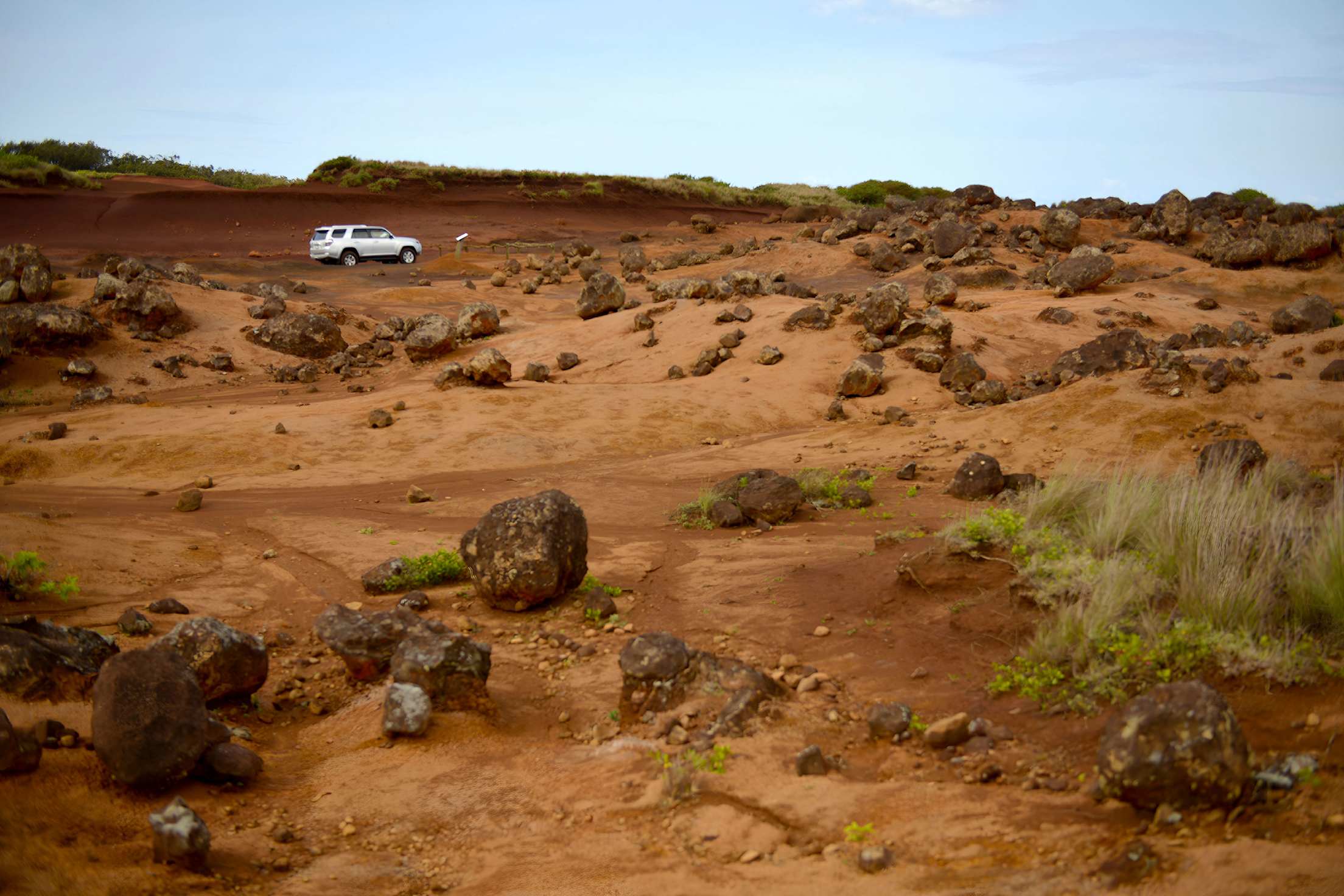
Lanai: Keahiakawelo
Though Lanai may be one of the least visited of the major islands, its natural wonders are well worth the trip. For a truly otherworldly experience, take a road trip to Keahiakawelo, where dusty red dirt and oddly shaped volcanic rocks create an isolated atmosphere that’s perfect for reflection and meditation. The best time to visit is in the evening, when the reds and oranges come alive as the sun sets over them, illuminating and casting shadows across the landscape.
This spectacular rock garden was formed by erosion, thanks to the strong winds that whip across the terrain. Though some know it by the nickname “Garden of the Gods,” its name means “the fire made by Kawelo,” an ancient priest of Lanai.
How to Get There
There are two ways to get to Lanai. You can journey by ferry via Expeditions, which departs from Maalaea Harbor on Maui. You can also arrive by plane from Maui or Oahu, via Mokulele Airlines or private flights through Lanai Air. Once on the island, rent a four-wheel-drive Jeep through Lanai Car Rental to venture across the rugged paths to Keahiakawelo. You’ll need to make a plan to get from the harbor or the airport to the rental facility, typically through Rabaca’s Limousine Service or Lanai Taxi Service. After you’ve acquired a vehicle, the rental agent will provide a paper map that includes detailed trails and directions to your destination.
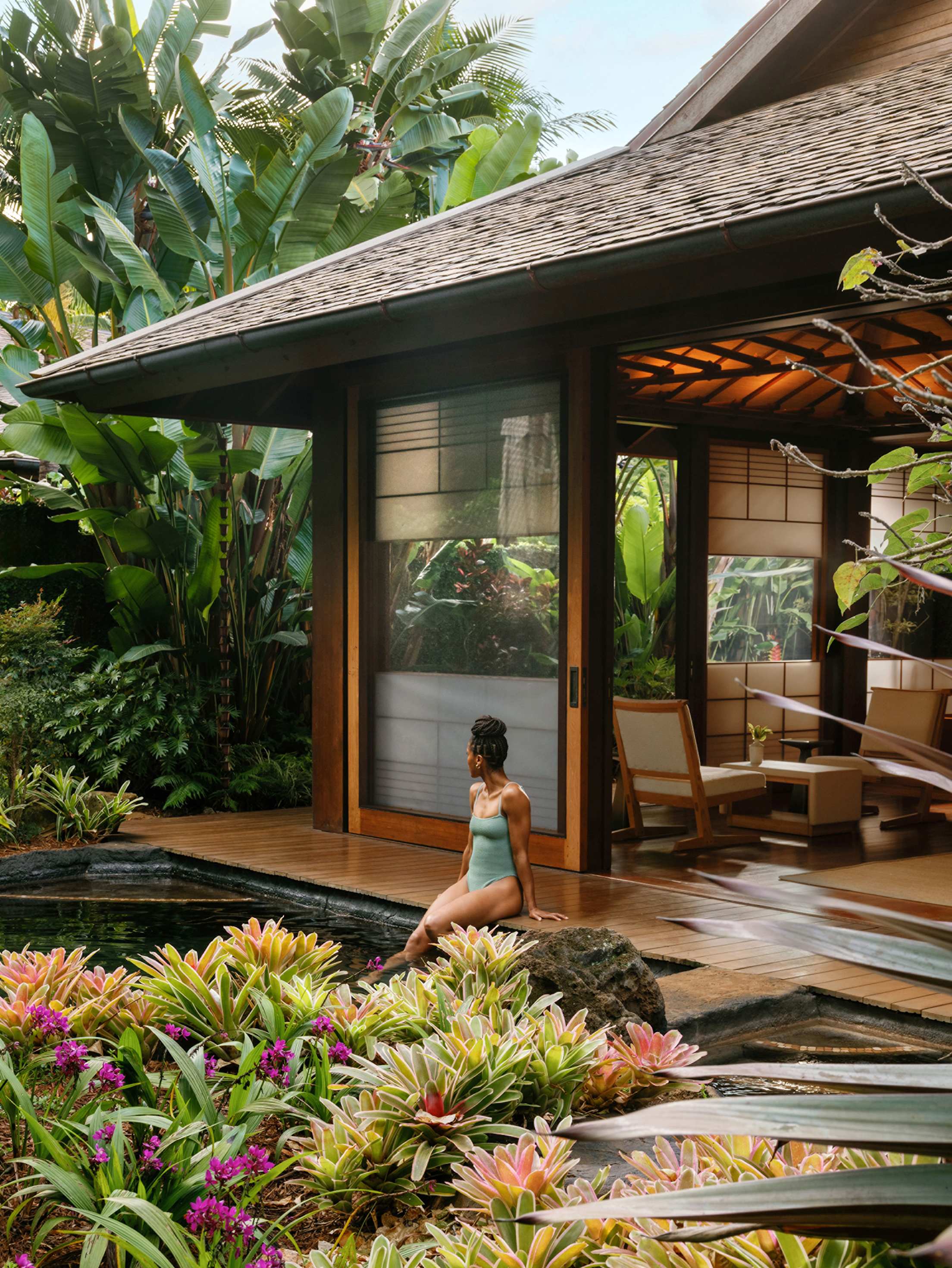
Where to Stay
There are only three hotels on Lanai. Two of the hotels are Four Seasons properties, and come with all of the luxury that you would expect. Four Seasons Resort Lanai is on the other side of Manele Harbor along the Hulopoe Bay and Sensei Lanai is an adults-only wellness retreat in a tropical garden. Alternatively, the boutique Hotel Lanai in Lanai City sits near the center of everything, making it easy to walk around the historic plantation town.
Things to do Nearby
Fronting the Four Seasons Resort Lanai, Hulopoe Beach has premium snorkeling. Grab a bite in Lanai City at Ganotisi’s Pacific Rim Cuisine or Lanai City Bar & Grill, where you can find local favorites such as garlic shrimp and poke, respectively. Before you leave, stop by the Lanai Culture & Heritage Center to learn about the island’s rich history. On your way to the airport, cuddle rescue kitties at the Lanai Cat Sanctuary.
Explore the roots of Hawaii’s surf culture with the Via Podcast.